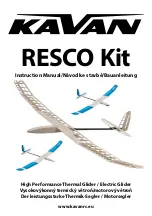
POH / AFM
AQUILA AT01-100A
Section 8
HANDLING & MAINTENANCE
Document Nr.:
Issue:
Supersedes Issue:
Date:
Page:
FM-AT01-1010-101
A.09
A.02 (15.10.2013)
03.03.2021
8 - 3
8.4 GROUND HANDLING
8.4.1 Towing
8.4.1.1 Moving forwards
The aircraft can be safely moved and controlled by one person on a smooth and level surface
with the tow bar attached to the nose wheel.
CAUTION
The tow bar should always be removed from the aircraft when it is parked.
8.4.1.2 Moving backwards
The aircraft should be pushed backwards using the tow bar. If needed, it is possible to push on
the propeller near the blade root. It is also possible to push on the leading edge of the wing
near the fuselage.
8.4.1.3 Turning the aircraft on the ground
To turn tightly, push down on the fuselage in front of the vertical stabilizer to raise the nose
wheel off the ground. Now the aircraft can be pivoted around the main landing gear.
CAUTION
1) Never push, pull or lift on the horizontal stabilizer or the spinner!
2) Never push or lift the control surfaces and flaps!
8.4.2 Parking
For short-term parking, align the aircraft into the wind, retract the flaps, set the parking brakes
and chock the main wheels.
When parking the aircraft outside for longer periods or in unforeseeable weather conditions, the
aircraft should be tied down as described in section 8.4.3.
Furthermore, cover the pitot-static tube and the stall warning, close the canopy, use a canopy
cover and cap the openings in the cowling. To avoid damage to the aircraft and its control
surfaces due to gusts or strong winds, secure the control column by pulling it to the control stop
and securing it with the waist belt and tightening the straps.
It is, none the less, always recommended to hanger the aircraft.
CAUTION
Temperatures higher than 50°C in the cockpit may damage avionics and instruments. When
parked in the sun, use a canopy cover to keep the cockpit cool.




























